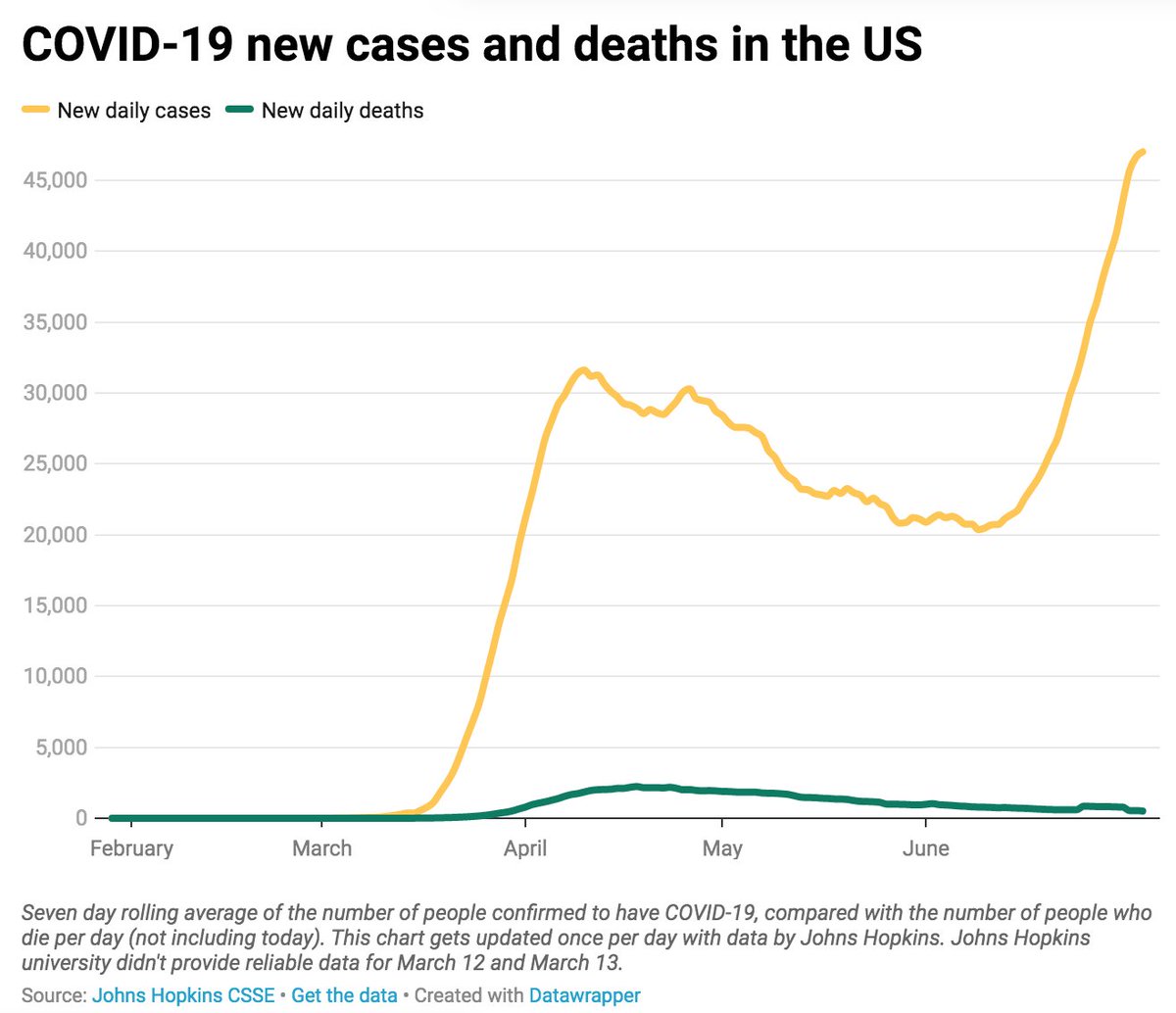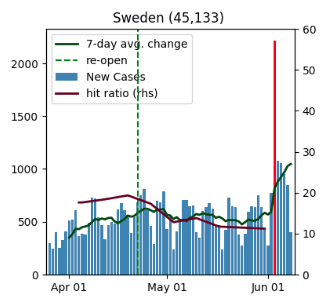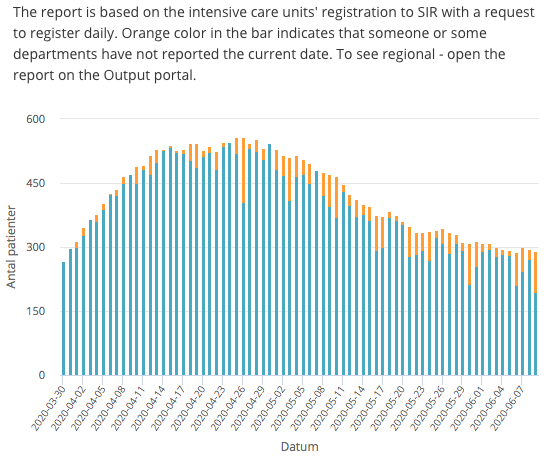Some observations (about fatality ratios) = THREAD

In the 1st wave, new cases peaked around 32K per day, and deaths peaked (slightly later) at around 2000 per day.
In the 2nd wave, new cases are running near 50K per day, and deaths are running at 'just' 500 per day.
The answer is unfortunately 'NO'. Let me illustrate:
(those states are generally at the bottom of the bar chart on the right here: bars >10%)












